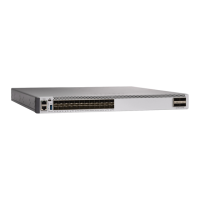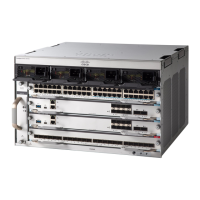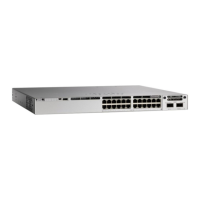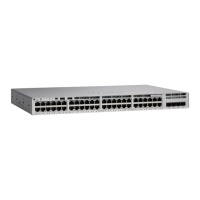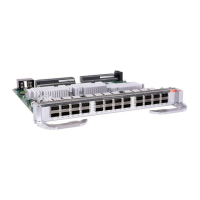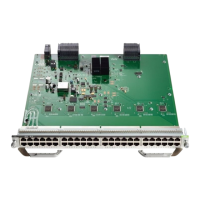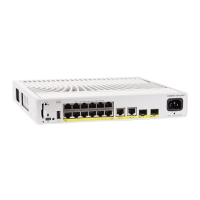Restrictions for Bidirectional Forwarding Detection
•
BFD works only for directly connected neighbors. BFD neighbors must be no more than one IP hop
away. Multihop configurations are not supported.
•
BFD support is not available for all platforms and interfaces. To confirm BFD support for a specific
platform or interface and obtain the most accurate platform and hardware restrictions, see the Cisco IOS
software release notes for your software version.
•
BFD packets are not matched in the QoS policy for self-generated packets.
•
BFD packets are matched in the class class-default command. So, the user must make sure of the
availability of appropriate bandwidth to prevent dropping of BFD packets due to oversubscription.
•
BFD HA support is not available starting Cisco Denali IOS XE 16.3.1
Information About Bidirectional Forwarding Detection
BFD Operation
BFD provides a low-overhead, short-duration method of detecting failures in the forwarding path between
two adjacent routers, including the interfaces, data links, and forwarding planes.
BFD is a detection protocol that you enable at the interface and routing protocol levels. Cisco supports BFD
asynchronous mode, which depends on the sending of BFD control packets between two systems to activate
and maintain BFD neighbor sessions between routers. Therefore, in order for a BFD session to be created,
you must configure BFD on both systems (or BFD peers). Once BFD has been enabled on the interfaces and
at the router level for the appropriate routing protocols, a BFD session is created, BFD timers are negotiated,
and the BFD peers will begin to send BFD control packets to each other at the negotiated interval.
Neighbor Relationships
BFD provides fast BFD peer failure detection times independently of all media types, encapsulations, topologies,
and routing protocols BGP, EIGRP, IS-IS, and OSPF. By sending rapid failure detection notices to the routing
protocols in the local router to initiate the routing table recalculation process, BFD contributes to greatly
reduced overall network convergence time. The figure below shows a simple network with two routers running
OSPF and BFD. When OSPF discovers a neighbor (1) it sends a request to the local BFD process to initiate
a BFD neighbor session with the OSPF neighbor router (2). The BFD neighbor session with the OSPF neighbor
router is established (3).
Routing Configuration Guide, Cisco IOS XE Everest 16.6.x (Catalyst 9500 Switches)
2
Configuring Bidirectional Forwarding Detection
Restrictions for Bidirectional Forwarding Detection

